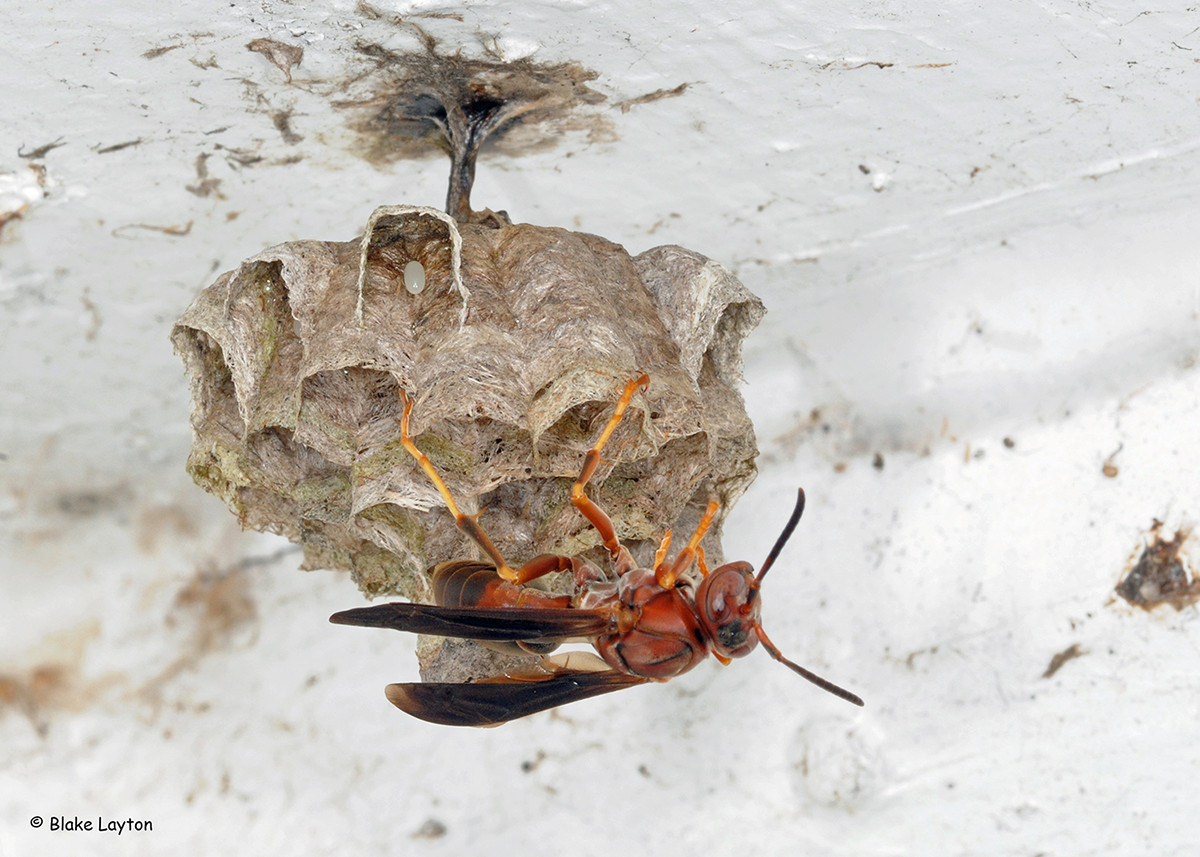Paper Wasp Queen, Vol. 4, No. 13
Related News
July 10, 2015
June 29, 2015
June 17, 2015

Order: Hymenoptera
Family: Vespidae
By late spring most of the paper wasp nests you see will be about this size, consisting of the founding female, aka. queen, and a dozen or more paper cells containing eggs and developing young. This wasp was a young female last fall. After mating, she found a warm, protected site to spend the winter, such as inside an attic or hollow tree. If it was a good site with easy access, she may have been joined by dozens of other overwintering females, representing several different species. This was not a nest, just a group of overwintering paper wasps.
Once warm spring weather arrived, she left her overwintering quarters, found a site that was protected from rain, and began building her nest. She had to find a good source of bare, exposed wood to do this, making many trips to chew off wood fibers and convert them into the paper that she used to build the nest. It was only after she had a small nest with several cells of varying sizes that she could lay her first eggs (You can see the most recent egg in the photo). Working alone, she has continued to collect wood fibers, enlarge the nest, lay eggs, and collect caterpillars and other insects to feed her developing brood (Paper wasps don’t collect pollen. They get their protein by eating meat, and “caterpillar burger” is a key part of the diet of paper wasp larvae.) Life has been busy so far, but help is on its way. That large cell immediately behind this wasp contains a developing pupa. Once this first adult daughter emerges, she will be joined by more and more siblings and the nest will grow rapidly through the remainder of the summer and early fall.
Control: If a wasp nest is in a location where it is likely to cause problems, it is much better to eliminate it while it is small than to wait until it is as big as Grandpa’s straw hat and contains dozens of wasps. Keep a can of aerosol wasp spray on hand to quickly and easily eliminate problem nests as soon as they are detected. Think about the kinds of places wasps like to build their nests and the places where you really don’t want to unwittingly bump into a wasp nest--have you used that grill yet--and check these areas for wasp nests. But just because you can see a wasp nest, or know where one is, doesn’t mean you have to kill it. Paper wasps are excellent predators of caterpillars and other insect pests, so nests located in out of the way places where they are not likely to cause problems should be preserved.
Blake Layton, Extension Entomology Specialist, Mississippi State University Extension Service.
The information given here is for educational purposes only. Always read and follow current label directions. Specific commercial products are mentioned as examples only and reference to specific products or trade names is made with the understanding that no discrimination is intended to other products that may also be suitable and appropriately labeled.